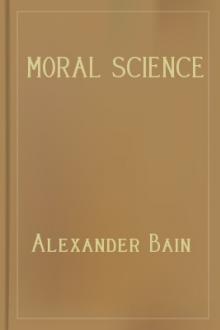Man's Fate and God's Choice, Bhimeswara Challa [best free ereader .TXT] 📗

- Author: Bhimeswara Challa
Book online «Man's Fate and God's Choice, Bhimeswara Challa [best free ereader .TXT] 📗». Author Bhimeswara Challa
alike.”167 The fact is, humans have more in common physically, despite the variations in size, color, and race. The cells of everybody, who are alive today, regardless of where or how they live, contain the same 100,000 or so genes. Collectively known as ‘the human genome,’ these genes contain all the information that makes us appear and function as humans rather than as members of some other species. But there are others who question this mainstream view that genes contain the codes that control life. For example, the British research scientist Susan Greenfield in her book The Private Life of the Brain (2000), says, “the reductionist genetic train of thought fuels the currently highly fashionable concept of a gene for this or that.”168 According to her, “(1) emotion is the most basic form of consciousness; (2) minds develop as brains do, both as a species and as an individual starts to escape genetic programming in favor of personal experience-based learning; (3) the more you have of (1), at any moment, then the less you have of (2), and vice versa. The more the mind predominates over raw emotion, the deeper the consciousness”169.
In his book Why We Do It: Rethinking Sex and the Selfish Gene (2004), the American paleontologist Niles Eldredge presents a major refutation of the almighty status of genes in evolution and human behavior and says, “genes have been the dominant metaphor underlying explanations of all manner of human behavior, from the most basic and animalistic, like sex,
167 Cited in : Live Science, Health Identical Twins Not So Identical by Robert Roy Britt, LiveScience Senior Writer, 8 July 2005, Accessed at: http://www.livescience.com/health/050708_identical_twins.html
168 Susan Greenfield. The Private Life of the Brain: Emotions, Consciousness, and the Secret of the Self. 2000. John Wiley Publishers. New York, USA. p.9.
169 Susan Greenfield. The Private Life of the Brain: Emotions, Consciousness, and the Secret of the Self. 2000. John Wiley Publishers. New York, USA. p.181-182.
up to an including such esoteric as the practice of religion, the enjoyment of music, and the codification of laws and moral strictures… The media are besotted with genes… genes have for over half a century easily eclipsed the outside natural world as the primary driving force of evolution in the minds of many evolutionary biologists.”170
It is in the manifestation of the mind that differences are more glaring than in the anatomy or physiognomy of human beings. The differences show up as irrational, even bizarre behavior that fits no pattern and defies every logic, even self interest. In Hinduism, it is said that karma works through the mind — buddhi karmaanusey — and makes us do things we are supposed to do, to redeem our prarabdha karma (the part of one’s past karma, which is to bear fruit in the future). But in so doing we also acquire new karmic bondage. Language, perhaps the most advanced human attribute, is also a divider. It is said that “using language as
a criterion, there are over 5,000 distinct human populations in the world…”171. Everyone’s destiny is distinct, and why one sails through life with ease and why another, who is similarly nurtured and placed, faces stormy weather, no one can tell. Equally inexplicable is the behavior which is as disparate, diverse, and multilayered as the human race. Why certain people acquire certain personalities and their lives follow a certain course, as opposed to some others who follow a different path, is a question that defies any rational explanation.
The manner in which we ‘behave’ depends on the subject and the context; and embraces a wide variety of circumstances such as personal, professional, social, sexual, and so forth. It is almost as if our consciousness assumes different ‘avatars’ while dealing with different human beings or even with the same person in different settings. One could be abominable or endearing, compassionate or cruel, caring or indifferent. The same human being is capable of different personality transformations in different settings, almost as if he manifests himself as different individuals. If what matters in the final analysis is behavior, then we seem to have no credible clues to its brittleness. To say that a person ‘means well’, is of little value, and has no meaning, unless that person acts righteously. In actuality, what we ‘mean’ is what we do, with or without our connivance. The adage, ‘the road to hell is paved with good intentions’ is apt. And that includes not only our conduct towards each other, but also towards the earth, and towards our cousins on earth. Behavior is not only what we physically do but also how we use the gift of language and the basic building block — thought. ‘Bad’ behavior is not only a stab in the back or a slap on the face, but also a stinging word or a cutting phrase; and ‘good’ behavior can be a silent hug or a soothing syntax. It is how we connect, or rather do not connect, to each other that has made mankind so fractious and fearful. It is our collective behavior that has led life on earth to the present perilous pass. We behave like a species impatient to meet its doom. The psychologist Havelock Ellis said, “The sun, the moon and the stars would have disappeared long ago… had they happened to be
within the reach of predatory human hands.”172 Without the benevolence of Nature, without the earth’s bounty, we cannot live for a second; without biodiversity, which includes millions of other species, human life is unsustainable. Many things are inexplicable in human behavior; this dependence on Nature and on our co-species is one of them. What is our true
170 Niles Eldredge. Why We Do It: Rethinking Sex and the Selfish Gene. 2004. W.W. Norton. New York, USA. p.15.
171 Cited in: Morrison Institute for population and resource studies, Human Genome Diversity Project, Summary Document, II Introduction to the Human Genome Diversity (HGD) Project, Accessed at: http://www.stanford.edu/group/morrinst/hgdp/summary93.html
172 Havelock Ellis. The Dance of Life. 1923. Cambridge, Massachusetts,USA. p.352.
nature? What is normal and what is abnormal? What is the set of characteristics that is natural and necessary to be human? Does it emphasize freedom or bondage, license or liberation?
Sages like Ramana Maharshi say that liberation is our real nature and the fact that we yearn for liberation shows that freedom from all bondage is innate in us. He said “One believes that there is bondage and therefore seeks liberation. But the fact is that there is no bondage but only liberation. Why call it by a name and seek it?”.
Rousseau famously said, in the opening line of his work The Social Contract (1792), that “man was born free, and he is everywhere in chains”. We do not know exactly what Rousseau meant, but his words probably refer to the corrupting influence of culture on our ‘natural goodness’; and that God did not create society with all its inequities, but man did. To be ‘born free’ also implies that we are all born in equality. Both the assumptions are at best half truths. We may dream of freedom and equality, but the reality is that in bondage and in inequality we are born, and in bondage and in inequality we live, and there is no freedom or equality in what happens after we die. Nothing is equal in the death of a baby within twenty- four hours after it is born, and a person who lives for eighty years (400,000 babies die in a year, half of them in India alone, according to the charitable organization, Save the Child).
Man has not found a way to harmonize individual freedom and common good, and when he did attempt to do so, he tended to compromise on freedom. We have not achieved the ‘social compact’ that Rousseau envisioned. But bondage, like its opposite, freedom, is neutral; it is not necessarily good or bad; it hinges on how the mind perceives it and reacts to it. Bondage means acceptance and restraint, and they are not always bad. Every relationship is a kind of bondage; it inherently limits even a modicum of freedom. It is non-acceptance and disobedience that causes trouble. It is disobedience, of God, that, according to the Bible, sent man out of Paradise and created sin. It is our disregard of the laws of Nature that has created the environmental crisis. The often used expression ‘security of the slave’, to denote a false sense of security, is not always negative; it depends on who the master is, and what kind of slavery it is. We are all ‘slaves’ of some sort or the other, slave to a habit, good or bad; or slave to someone we love or hate. The scriptures urge us to surrender to God or a ‘guru’ and in that sublime state, to suspend all judgment. This is what happens in the temporal bondage too. But Rousseau was dead right when he said, “One man thinks himself the master of others, but remains more of a slave than they”. Indeed no one is a master or a slave for nothing, no one deserves either state; and that ‘something’ has little or nothing to do with what we are in this life. It is part of a continuum. The premise of culture is that man cannot be left to his appetites and desires, and neither Nature nor man trust an other man without chains. Basically what chains us or binds us is the mind, as Vedanta repeatedly says. A slave may be freer than the master, and a mother can be more in chains than the just-born — it is all a state of mind. The real bondage is our ego and the baggage is the byproduct of evolution, the foul fallout of our fight for survival over millions of years. We must recognize the awesome truth, as Laura van Dernoot Lipsky reminded us, that the kind of human activity which enabled us to survive is what is destroying us today.
Human activity and its toxic fallout
The scriptures say that once the world comes to an end with death, darkness, and decadence, like a bad dream, mankind — or rather whatever or whoever remains, the truly faithful and virtuous — will enjoy thousands of years of beatitude, prosperity, and rectitude. The Hindu scriptures say that at the close of the Kali Yuga, God will incarnate with the name Kalki (the tenth avatar) in the house of the high-souled Vishnuyasha, the foremost Brahmin (one who is most virtuous) in the village of Shambhala, the exact location of which is hazy, but is generally believed to be somewhere in Tibet. Lord Kalki will be the king of kings riding on the fleet-footed horse Devadatta. He





Comments (0)